
Are the enormous Earba and Fearna hydro projects merely the thin end of an ever bigger wedge? Thanks to a relaxed developer-friendly planning regime, is anywhere in Highland Scotland now safe from energy projects designed to feed an insatiable demand down south? In pursuit of clean power, do we risk permitting huge and irreparable harm across our remaining wild habitats and scenic land? And if so, what (and who) is it all really in aid of? It's not too late to shed light on the murky world of Highland mega-energy, says Jane Meek, but time is running out for our mountain heritage.
Earba. Sounds painful - and so it will be, should it come to pass.
In case you haven't heard, Earba is the codename for a massive pumped storage hydro scheme to be hosted by Ardverikie Estate of Monarch of the Glen fame on behalf of Gilkes Energy, a Lakes-based engineering firm hitherto better known as a developer of small-scale run-of-river hydro schemes on Scottish burns and rivers. Some of these may be familiar to you: they include Pattack on Ardverikie Estate, Ben Glas on Glen Falloch Estate near Crianlarich, and Neaty Burn in Glen Strathfarrar, to name just three.

Gilkes Energy has now moved up into the big league of pumped storage hydro (PSH). Visit their homepage to admire a brief slide show of projects past, present and in planning. It's glossy professional stuff, just what you'd expect from the self-styled "leading independent developer" of conventional hydro and PSH in the UK.
It's industrialisation on a vast scale. Are these truly the right schemes in the right places?
The aerial shots are particularly fine but… hang on a minute… isn't that Loch a' Bhealaich Leamhain down there, gleaming like a pearl in the high pass between Munros Beinn a' Chlachair and Mullach Coire an Iubhair (Geal Charn as was)? And … oh dear, isn't that Loch Fearna, the glittering shelf lochan below Spidean Mialach, immortalised in countless photographs by walkers crossing the col between Spidean and neighbouring Gleouraich? From the slopes above Fearna, the views across Loch Quoich to Gairich and beyond are simply stunning. After watching the slide show, you may feel simply stunned.
And that's before you've seen what the schemes entail and how they'll look. For more on that, keep reading. Pour yourself a stiff drink.
Earba and Fearna are by no means the only pumped storage hydro projects currently on the table. For an enlightening overview of PSH in the Scottish Highlands - schemes in operation (Cruachan, Foyers), pre-construction (Coire Glas), proposed (including Earba, Fearna) or slated for upgrade/conversion (Cruachan again, Sloy) – look no further than David Jarman's forensic account, as featured recently on Parkswatchscotland.
The overview is compelling stuff, concisely presented in power point form with punchy visuals to the fore and just the right amount of text to get the big points across, including the technical detail that most of us struggle to get our heads round.
For the time-poor, here are a few choice extracts from David's presentation conveying the key features of Earba and Fearna.
Earba
No, your eyes are not deceiving you. As well as damming (and damning) Loch a' Bhealaich Leamhain in the pass between Beinn a'Chlachair and Mullach Coire an Iubhair, this scheme will swallow up the fabled twin-loch, Lochan na h-Earba, between Creag Pitridh and Binneins Shuas and Shios.
Fearna
Another double whammy. Coire Dubh will disappear, subsumed along with Fearna into a single monstrous reservoir perched above Loch Quoich.
Unless you really couldn't care less about what you see in the hills and what the impacts might be on soils, plants and wildlife, as well as on the human spirit, you can't fail to respond to images like these. This is industrialisation on a vast scale, cherished mountain landscapes changed for ever and utterly denatured. Is this what we mean by "saving the planet"?
The failure to devise a coherent spatial policy for renewable energy development in Scotland has left us with a free-for-all
For both Earba and Fearna the big question should be: "Is this truly the right scheme in the right place?" The problem lies not with pumped storage hydro per se but with the free-for-all approach that dominates current Scottish Government thinking(?) in energy matters. The SNP has no qualms about leaving it up to developers and landowners, the free market in other words, to choose where these massive schemes should go. That our mountain heritage, our national natural heritage, gets sacrificed in the process carries no weight with them. I suspect it doesn't much interest the other political parties either.
The same policy vacuum has fostered rampant onshore wind farm development in Scotland (in contrast to England, where almost nothing of note has been built onshore for many years). The acceptable-tolerable sites are long gone; now it's pretty much anywhere that can host a turbine, or soon will be. Already Wild Land Areas have started to succumb - has anyone passed through Crask recently, the great rampart of Klibreck shrunken as you cower, mouth agape, beneath roadside megaturbines? It wouldn't take much to see National Scenic Areas follow suit. The trajectory from the day Alex Salmond uttered the immortal words "I want Scotland to be the Saudi Arabia of renewables" is plain to see: nowhere is safe.

Over the last 15 years, Scotland's planning laws have been rewritten as a developers' charter, eroding protection for wild land and leaving some of the world's most special mountain landscapes like a row of sitting ducks waiting to be picked off one by one. Not for nothing has Gilkes Energy refused to divulge details of the site selection process that led them to nominate Ardverikie as their number one choice. (Their 40-year association with the Estate being an irrelevance, of course.) We cannot know which other sites were 'screened', nor how they compared in terms of environmental effects. The Environmental Impact Assessment Report underpinning the planning application for Earba should state this information but doesn't. (I'm told this is technically "against the rules" and would give grounds for an appeal should the project be approved - experienced crowdfunders, take note.)
Clearly Fearna must have been one of the other names on that secret list; but how many other "projects" are lurking in the wings under the convenient cloak of "commercial confidentiality"? More prized corries and lochans ripe for destruction in the name of Net Zero. It doesn't take much imagination to see Earba and Fearna as the not-so-thin end of a very fat and very lucrative wedge. We could dam every corrie in Scotland, at eye-watering cost, and still the UK would be miles short of its future energy storage needs.
How did we get here? Part of the problem lies with politicians. The failure to devise a coherent spatial policy for renewable energy development in Scotland has left us with a free-for-all under a government whose attitude can best be summed up as 'the more the merrier'.
Is it really too much trouble to estimate how much storage capacity we need, identify suitable sites for PSH across the land, rank these in a hierarchy with the least damaging (in terms of environmental, community and landscape impacts) at the top, and see to it that only as many schemes as are genuinely needed get built?
In the rush for Net Zero, democracy and accountability have been axed, and nowhere is safe from development
At the same time, shouldn't our politicians also be looking at other ways of storing surplus energy? A recent study by the Royal Society describes the potential contribution of PSH at UK level as "marginal", and with uncalculated carbon emissions from construction. The report advocates hydrogen storage in deep salt caverns as a more cost-effective and reliable solution, quicker to deliver – and at the centre of where the demand is. Most if not all of the caverns happen to be in England.
So, where does this leave us? Yes, the climate is in crisis. Yes, we need ways to store surplus power and balance grid demand. But we delude ourselves if we think that, by sacrificing Earba-Fearna, we will keep the wolves at bay for long. Green energy schemes are invariably touted as generating enough electricity to heat X thousand homes or power a city the size of Y, creating the cosy illusion of finite national demand, an imaginary finishing line beyond which lies Net Zero. Just a few more corries, a few more skylines, and we'll get there, save the planet and put our feet up. In your dreams. Our domestic energy consumption will soon be outstripped by voraciously power-hungry new-tech, including datacentres, cryptocurrency and AI. As fast as we surrender our mountainscapes, feeding the beast cheaply, the more ultra-profitable uses for power will spring up. With wind turbines encroaching on the borders of our National Parks and lapping at the foothills of Wyvis, the Fannaichs, Kintail and Affric, the precedent for pumped storage hydro to sweep unchecked across the Highlands is already well established.

Is it too late to save Earba-Fearna?
Those unfamiliar with the Scottish planning system should know that all energy infrastructure projects with capacity in excess of 50 MW go straight to the ominously-titled Energy Consents Unit (ECU) for assessment. The local planning authority is merely a consultee. The ECU is a Scottish Government body and its recommendations to grant or refuse are invariably followed by Ministers. The Earba application is still under consideration; you can view it on the ECU website here. While the window for comments by members of the public has already passed - a question of "blink and you've missed it" – it's worth noting that some of the statutory consultees, specifically Highland Council, have yet to respond.
Fearna is still at the pre-application stage ('in scoping') and can be viewed on the ECU website here. Don't fall into the trap of thinking "oh, it's only in scoping, I don't need to do anything yet … " The fact is that unless more people hear about these proposals and speak out NOW, Fearna will almost certainly go the same way as Earba. An application for planning permission will be submitted and from there… well, let's face it, not much that lands on the desk of the Energy Consents Unit these days is likely to get knocked back; the clue's in the name. The days of the public local inquiry are long gone. In the rush for Net Zero, democracy and accountability have been axed and nowhere – absolutely nowhere – is safe from development.
So, what can you do?
If you live in Lochaber, where both of these schemes lie, it's well worth writing to your local Councillors to express your concerns and ask whether damaging industrial development on this scale is appropriate in an aspiring National Park. Wherever you live in Scotland, contact your MSP and ask them to write to Ministers on your behalf. Wherever you live in the UK, letters to newspapers, blog posts and social media are other powerful ways to get the message out there. This is everyone's natural heritage, after all.
It's definitely not too late to drag pumped storage hydro out of the shadows and into the public spotlight, but we have to act fast. We need to demonstrate that green is not good unless it's in the right place, and that the harm inflicted by schemes like Earba and Fearna on our mountain heritage – the heritage we want future generations to enjoy, as we have enjoyed it - will be immense. And permanent.










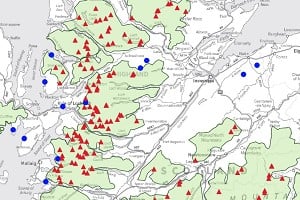

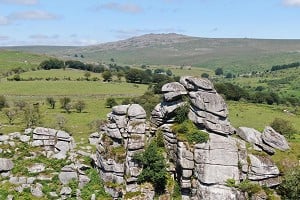
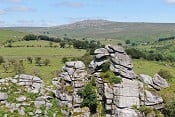








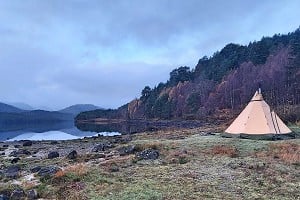
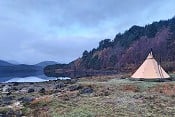


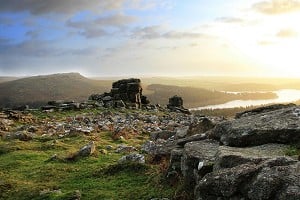
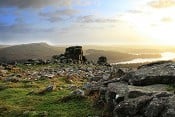
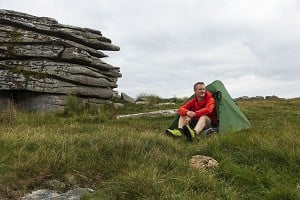

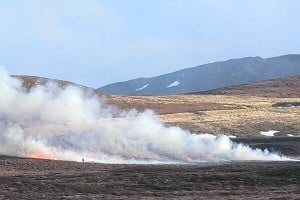
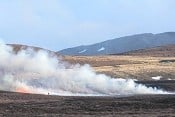
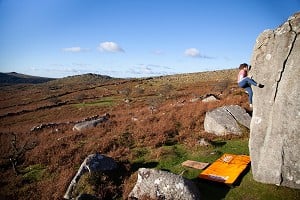
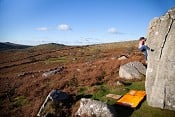


Comments
Is it really wild or the remnants of over grazed baron land..?
I haven't a better solution, but energy is needed, if 'green' energy is required it needs to come from somewhere.
It would be amazing to see the Highlands fully re wilded and safe from large scale infrastructure, however we all demand modern lives which need power.. we can't want for it and complain about it simultaneously
In the interests of balance, it would be useful to know who the author is (UKC profile registered yesterday, 7th July) and what their qualifications/ background are. There's often some such information provided at the end of similar opinion articles but in this instance, there's nothing.
Yes - at least the first half of the article is quite polemical, perhaps rightly so but for someone like me, who knows nothing about this beyond what I've read here, it does feel like the other side of the story is missing.
The bit about the new green energy all just getting used up by cryptocurrency mining and AI might be true, but surely the solution there is regulation that stops wasteful or pointless energy usage, rather doing nothing and saying "we're ****ed already. Lets not do anything."
So what would you suggest? This is all a bit "Down with this sort of thing" - what alternatives are you suggesting? This appears to be a no to hydro and a no to onshore wind. Presumably then you're in favour of more north sea gas? More offshore wind? More nuclear? Or just a random "something else that's NIMBY"
Source and agenda needed please.
Pumped storage is pretty good if built like Dinorwic. You hardly know it's there.